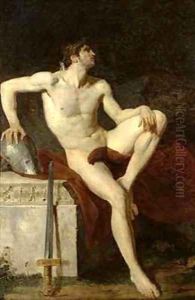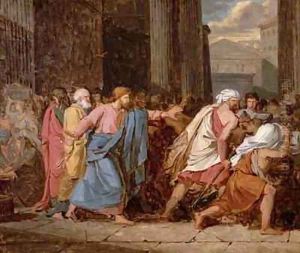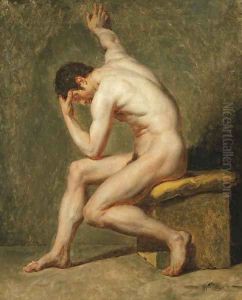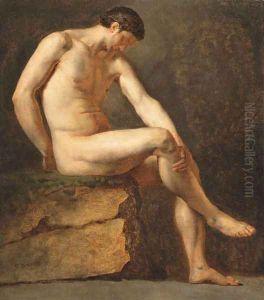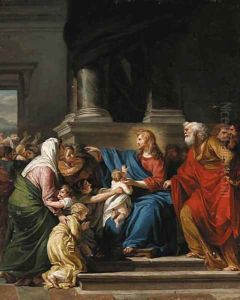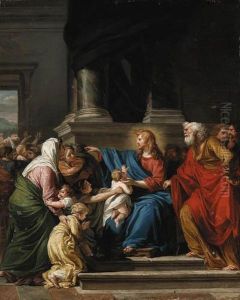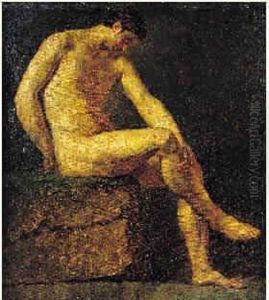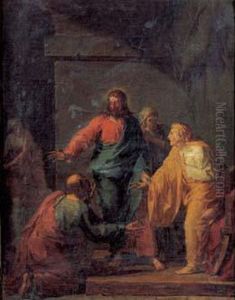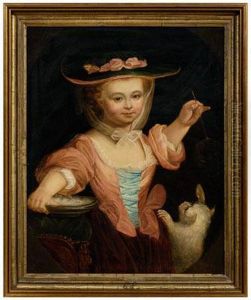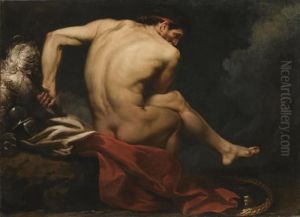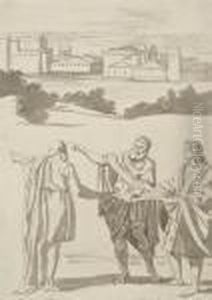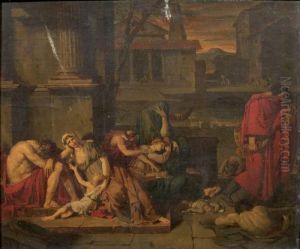Jean-Germain Drouais Paintings
Jean-Germain Drouais was a notable French painter of the neoclassical period, born on November 25, 1763, in Paris, France. Emerging from a family with a strong artistic background, his father, François-Hubert Drouais, was a recognized portrait painter, which influenced Jean-Germain's early exposure to the arts. Despite his brief life, Drouais' work left a significant mark on the French art scene of the late 18th century. His talent was evident from a young age, and he quickly gained recognition for his skill and dedication to art.
Drouais enrolled at the Royal Academy of Painting and Sculpture in Paris, where he studied under the guidance of notable artists such as François-Guillaume Ménageot and later, the acclaimed Jacques-Louis David. Under David's mentorship, Drouais' style flourished, embodying the neoclassical ideals of clarity, harmony, and moral severity. His ability to convey profound emotional depth and his meticulous attention to detail were among his standout qualities.
In 1784, Drouais achieved considerable acclaim by winning the prestigious Prix de Rome with his painting 'Marius at Minturnae,' which allowed him to study in Rome. His time in Italy was crucial for his artistic development, granting him the opportunity to study classical art and the Renaissance masters firsthand. This experience deeply influenced his subsequent work, which often reflected themes of heroism, virtue, and the human condition, aligning with the neoclassical movement's emphasis on classical antiquity.
Jean-Germain Drouais' promising career was tragically cut short when he died of a sudden illness on October 13, 1788, in Rome, at the age of 25. Despite his early death, Drouais left behind a legacy of works that continue to be celebrated for their emotional intensity and technical precision. His most famous works, including 'The Woman of Canaan at the Feet of Christ,' 'Filial Piety,' and 'Marius at Minturnae,' showcase his mastery of form and composition. Drouais' contribution to the neoclassical movement and his influence on his contemporaries and successors underscore his significance in the history of French art. His works are preserved in various prestigious museums, reflecting his enduring impact on the art world.



